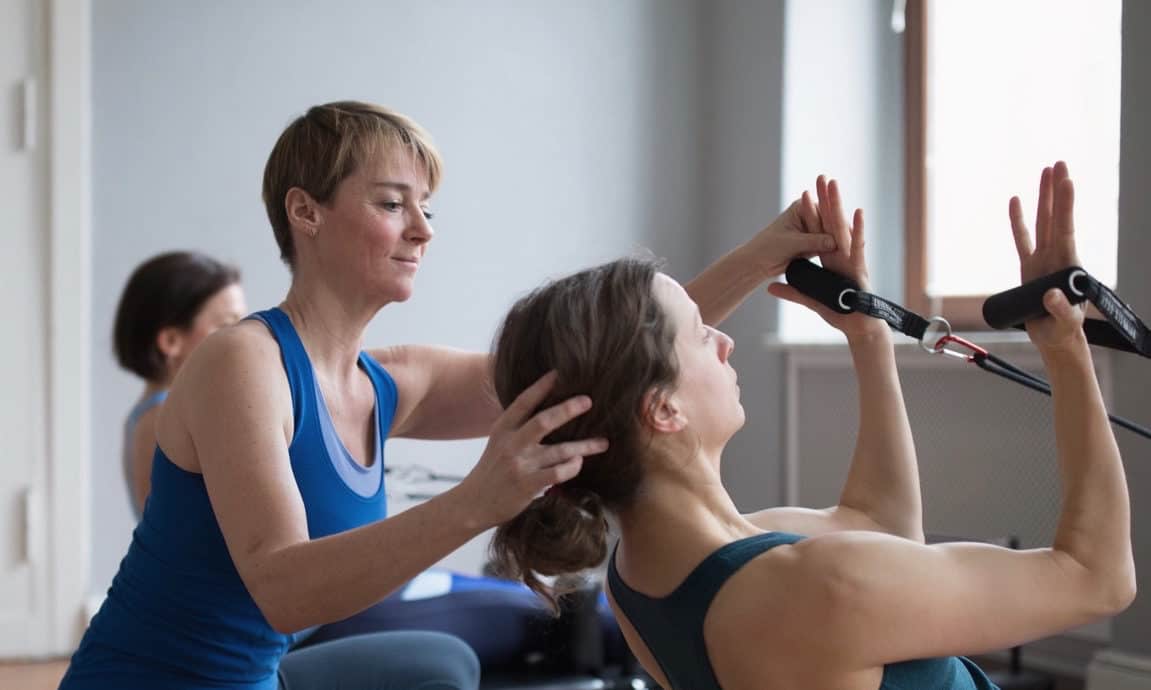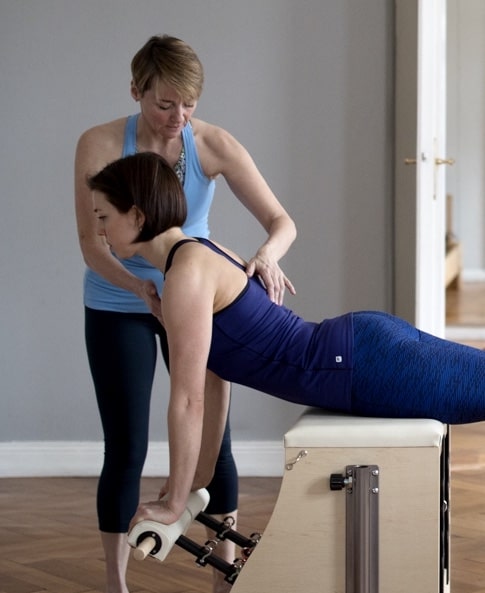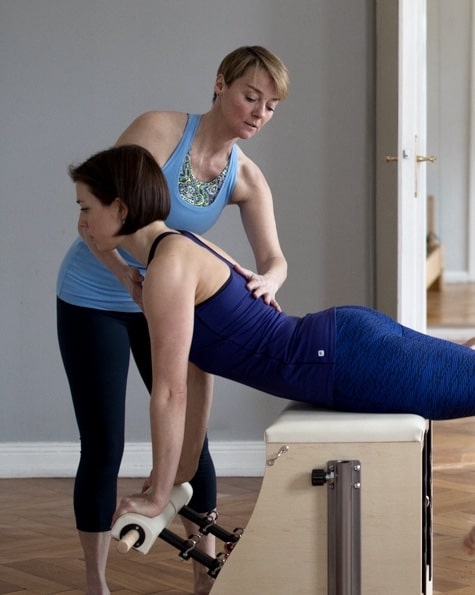
How reformer Pilates can help heal back pain
According to a survey by PubMed.gov, over 25% of women and 17% of men in Germany report experiencing chronic back pain within a 12 month period. That means pain almost every day for at least 3 months – often for much longer.
Joanna Mountifield, the founder of one of Berlin’s first Pilates studios The Body in Balance, was one of those people. Born on the south coast of England, Joanna spent much of her life pushing her body to its absolute limit. She did ballet for 14 years and spent her early 20s teaching fitness and aerobics classes.
Over the years she’s run marathons, lifted weights, and trained many of Berlin’s pilates teachers. She found it easy to push herself and at one point during her 30s was teaching over 25 fitness classes per week, on top of her daily run training and HIIT workouts and establishing her new studio. Joanna says she rarely took days off and when she did, she felt lazy.
Now 55, Joanna has a very different perspective on fitness. She experienced first-hand the repercussions of never giving her body a rest, and hopes that her story will help others figure out how to slow down.
Joanna got into Pilates in the ‘90s, when it was almost unheard of in Europe, so she had to travel to Chicago to get her teaching certification. She moved to Germany in ’94 and set up her studio a few years later.
“When I first set up my studio, there were just 3 of us in Berlin,” Joanna says. “It was quiet until the mid-2000s and it’s really boomed in the last 3 – 5 years.”
Joanna enjoyed the elements of Pilates that reminded her of ballet – balance, detail, control. “It’s meditative and centering,” she says. “The way the springs work is different to other types of movement.”
But in 2010, after years teaching Pilates and training hard on the side, Joanna’s body finally gave up. “Stress is considered to be a major factor in back injury,” Joanna says.
“And when I had my first prolapsed disc in 2010 I was also doing a lot of intense yoga, long distance running, and I had a major stress event in my life. I think that was a contributing factor.”
Joanna woke up one morning with terrible pain in her leg and back. She went straight to hospital and spent five days lying in bed, unable to move. “In the end they didn’t do anything except give me a whole bunch of pills and tell me to rest,” Joanna says.
Joanna was due to teach a reformer Pilates training course that week, with clients flying in from around the country. Jo was too badly injured to teach but instead of cancelling the training, she asked a colleague to demonstrate the movements for her.
“When a movement was in a neutral spine position, I would demonstrate it,” Joanna says. “And then I’d do another, and another. By the end of that four day course, you would never have known I had a back problem.”
The exercises healed her back so well that she was back on her feet within days. Jo says she still had damaged nerve endings which caused a slight limp, but apart from that she was able to continue teaching Pilates.
But, unfortunately, her back injury journey wasn’t over. In 2015 Joanna suffered from another prolapsed disc. “I was very stressed, I was working too much and wasn’t taking time to look after myself and do my own practice.”
Jo didn’t have terrible pain beforehand, she says she just felt like she needed to stretch a little. “I got 200m down the road one morning and then I just couldn’t walk. My husband had to come get me. It was so painful I didn’t know what to do with myself.
I couldn’t get comfortable on the floor, I couldn’t sit in one position for more than 10 minutes.” The doctor said it was a prolapsed disc and because it was affecting her leg so badly and she could barely move her foot, she was rushed off to surgery a couple days later.
After surgery, Jo had to start from zero. She had no movement in one leg, so rehabbed with a mixture of reformer Pilates and physio. “A lot of people think Pilates is all about abs,” Jo says. “But equipment-based Pilates has lots of options for working on alignment and strengthening the limbs.
What is reformer Pilates?
You strengthen your core, and that includes your back, but there’s also a lot of targeted activity that helps strengthen the feet, lower limbs and hips. Some of the damage to my nerve was permanent, and now if I go on holiday and don’t do my exercises or have access to a reformer, my right leg will degenerate rapidly.”
Joanna’s Pilates studio is located on Mehringdamm in Berlin’s Kreuzberg district. Many of Joanna’s clients come to pilates initially because they suffer with some form of back pain or have postural issues, and Pilates is recommended by their doctor or physiotherapist.
The studio offers group Pilates classes on the reformer, tower and chair. Each class has a different vibe, but the central focus is the same – improving alignment, strengthening weaker muscles, and correcting physical imbalances.
Most people develop some asymmetries during their lives, but injuries are often the result of stronger muscles compensating for the weaker side of the body.
Pilates corrects this because the equipment makes it difficult to cheat during exercises, and many movements target each side of the body separately. Weaker areas become stronger, reducing disbalances.
This makes Pilates ideal for rehabilitating injuries, but will also improve your athletic performance and reduce the risk of injuries in the future.
The Body in Balance Studio offers classes to Urban Sports Club members, however please get in touch via email 48 hours before the class to secure your place: [email protected]
Urban Sports Club has tons of reformer Pilates studios all over Europe. Take a look at our website to find studios in your area.





Comments